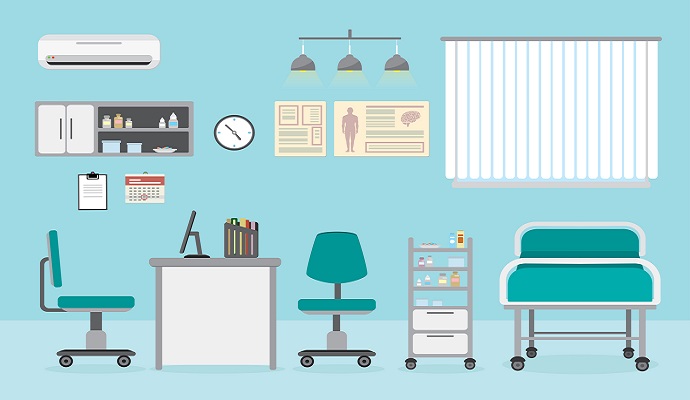Healthcare Consumerism Driving Growth in Outpatient Services
New technologies and healthcare consumerism are leading to outpatient growth, but providers face major challenges with outpatient care, a new survey shows.

Source: Getty Images
- Providers and other major healthcare stakeholders are increasingly investing in outpatient services and centers in response to new technologies and healthcare consumerism, according to a recent survey of 188 healthcare leaders.
The survey conducted by Definitive Healthcare found new technologies to be the number one reason for outpatient growth, earning the majority of votes with 37.3 percent.
Providers and other leaders across the biotech, financial services, staffing, life sciences, IT, and consulting verticals are attracted to new outpatient opportunities because of emerging technologies like advanced imaging, virtual and remote care, telehealth, and mobile applications.
But provider leaders and their peers are also growing their outpatient offerings to respond to healthcare consumerism. With 31.6 percent of the vote, consumerism was the second most cited reason for the growth in outpatient services.
“In Definitive Healthcare’s 2019 Healthcare Trends Survey, new technologies and industry consolidation were established to be top-of-mind for healthcare professionals, and this ostensibly stretches into the outpatient market as well,” stated Jason Krantz, CEO of Definitive Healthcare. “Our data shows that outpatient care is the fastest growing segment in the market, and we primarily attribute that growth to advancements in medical technologies, patient preferences, and financial incentives.”
The outpatient market is steadily growing. A 2018 Deloitte Center for Health Solutions report found that visits to outpatient facilities, including urgent care centers, ambulatory surgery centers (ASCs), and retail clinics, rose by 14 percent from 2005 to 2015. At the same time, gross hospital outpatient revenue grew, increasing by 45 percent, from $1,352 per visit in 2010 to $1,962 per visit in 2015.
Outpatient care has its advantages, respondents pointed out in the Definitive Healthcare survey.
The majority of respondents (36.7 percent) said the lower costs associated with outpatient care was the biggest advantage. Outpatient care is not subject to hospital room charges or other related fees, making outpatient substantially less expensive than inpatient care, the authors explained.
A recent analysis from the University of Washington identified the cost difference between inpatient and outpatient care, finding that the average inpatient stay cost over $22,000 in 2016, while outpatient costs averaged about almost $500. However, that same analysis also found that the average price of an outpatient visit increased by 62 percent after adjusting for inflation compared to 1995.
Almost 30 percent of providers and other healthcare leaders in the survey also cited easier or more convenient recovery as a top advantage of outpatient care. Patients can recover at home following a visit to an ASC, they noted, while receiving the same quality of care as in a hospital.
“Many patients prefer the in-and-out nature of outpatient surgeries and the ability to spend the recovery period with their loved ones in the comfort of their own homes,” the report added.
Other advantages of outpatient care included lower hospital-acquired condition risks (16.7 percent), improved continuum of care (15.9 percent), and other (2 percent), which included better patient experience, shorter wait times, and personalized care as the greatest advantages.
Providers and other healthcare stakeholders are looking to leverage the advantages of outpatient care, and new technologies, healthcare consumerism, and other reasons are driving them to make the investment, the survey showed.
In addition to new technologies and healthcare consumerism, a smaller portion of respondents (15.3 percent) said the recent increase in Medicare reimbursement to ASCs is a reason for outpatient growth. Another 14.1 percent said streamlined patient technology, like online bill pay and self-registration, is driving growth.
Providers have many reasons to expand their outpatient services. But respondents identified key challenges of delivering outpatient care, including implementing and investing in new technologies.
While new technologies are driving outpatient growth, they are also hindering provider success. Nearly 36 percent of respondents said health IT issues are the greatest challenge of the outpatient market. They cited a lack of interoperability between inpatient and ambulatory EHRs as a common obstacle.
About 28 percent of respondents also identified industry consolidation as a major challenge. Hospitals, private equity firms, and payers are rapidly buying ASCs, physician practices, and other outpatient facilities in response to healthcare consumerism and to succeed in value-based care arrangements that reward providers for delivering less costly care.
Less frequently, respondents selected staffing (16.2 percent) and patient attraction (13.1 percent) as top challenges.
